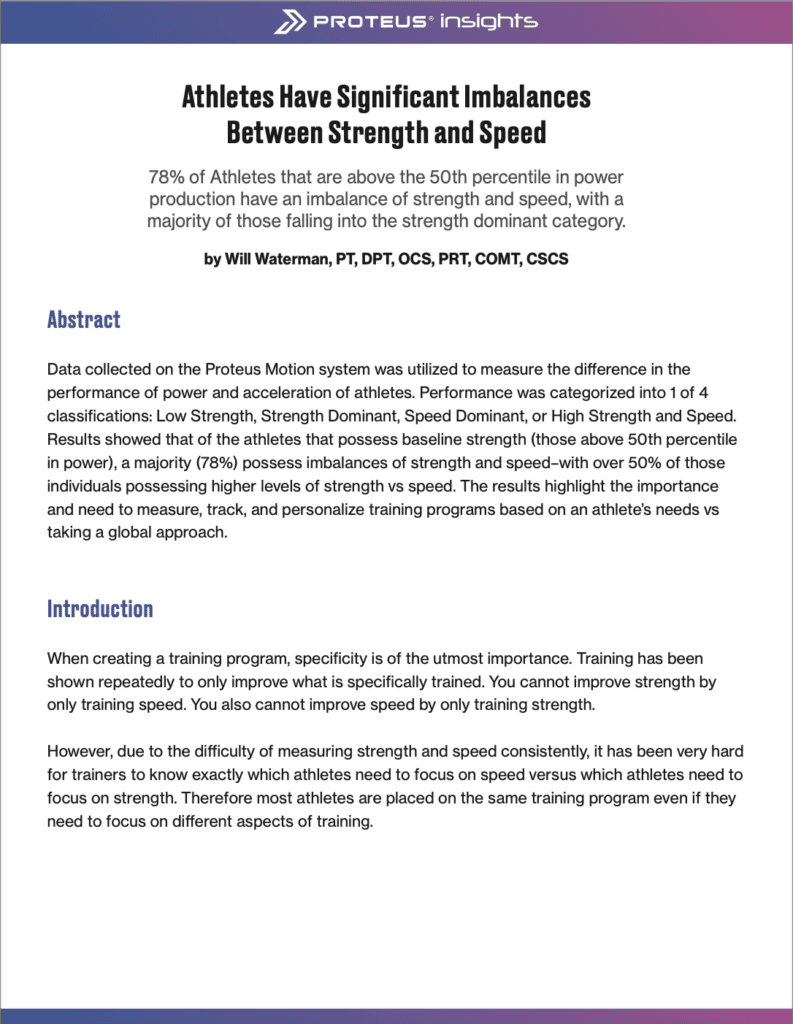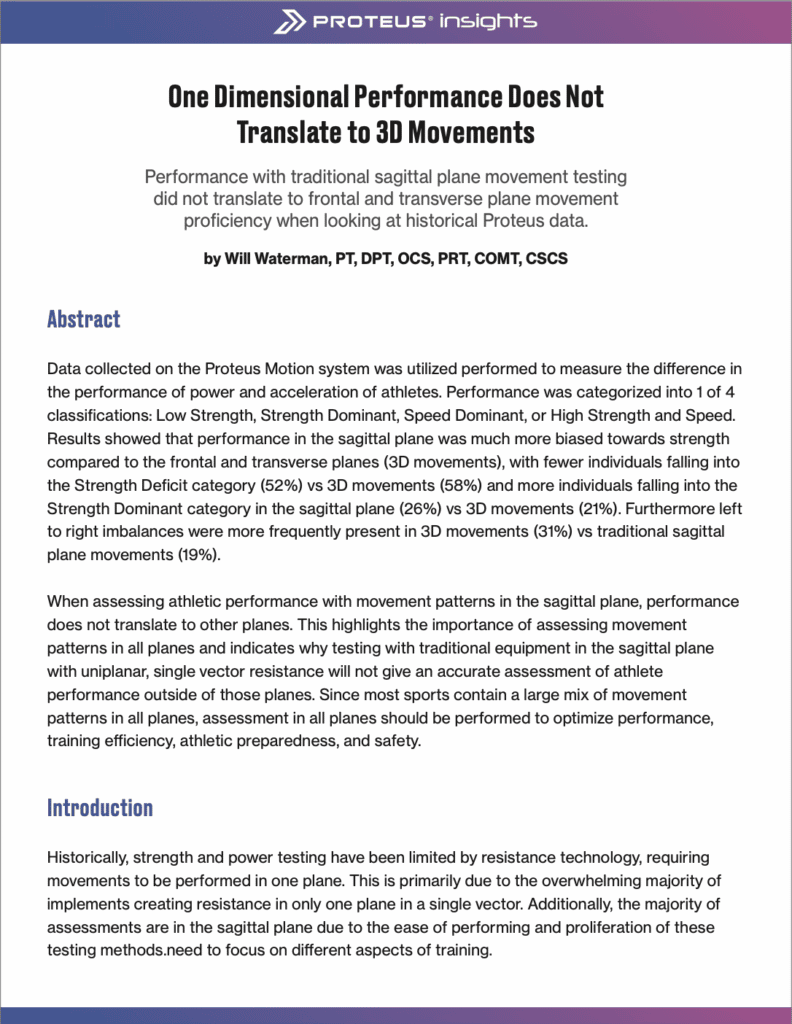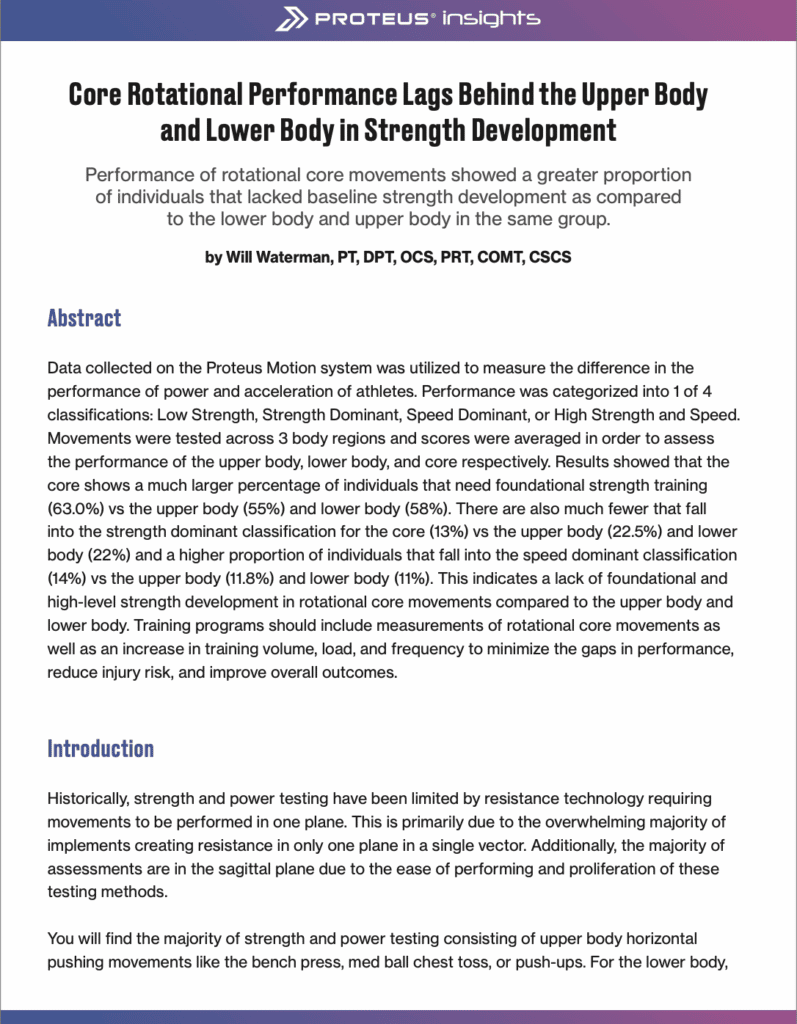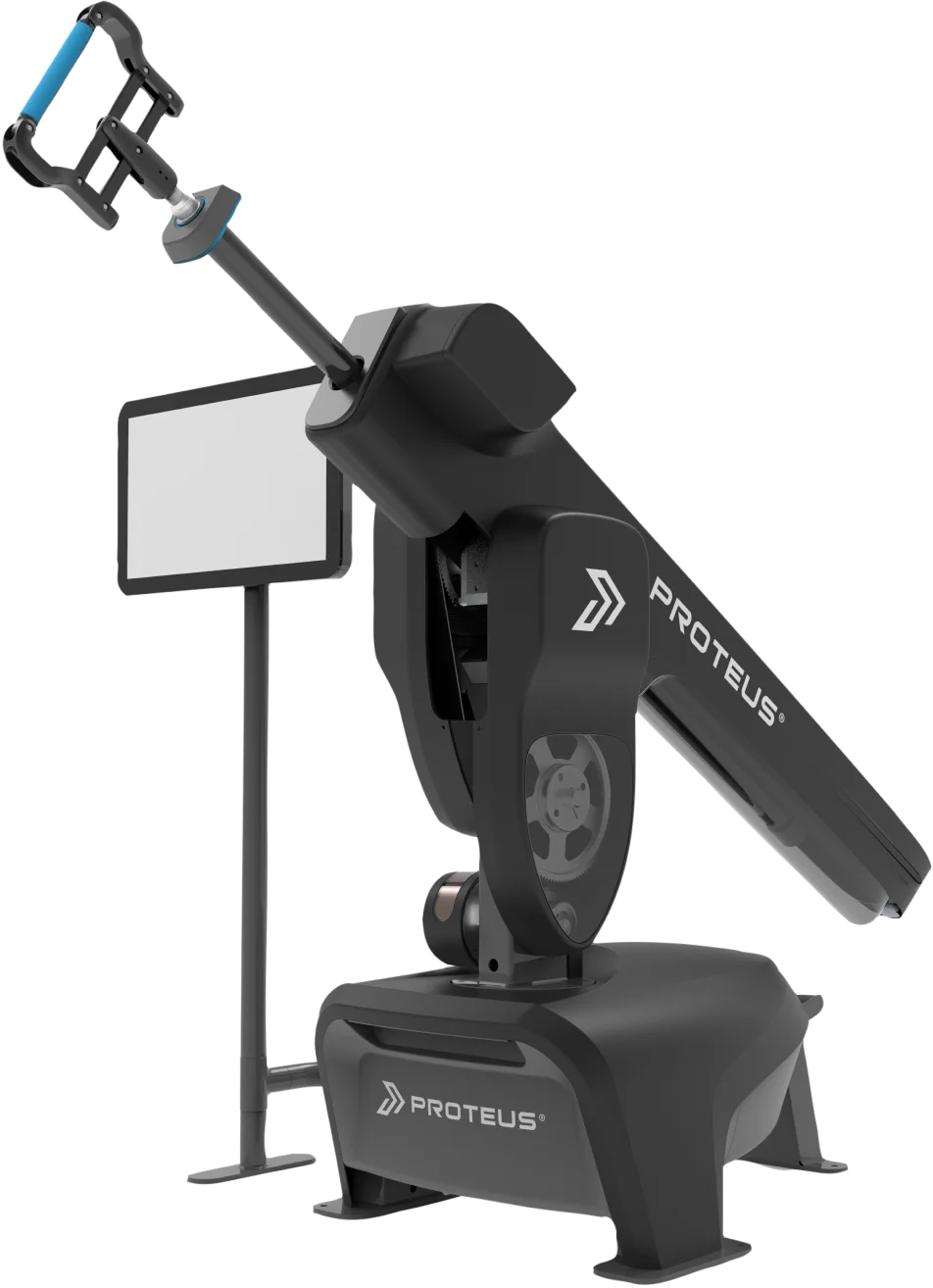PROTEUS NORMATIVE DATA
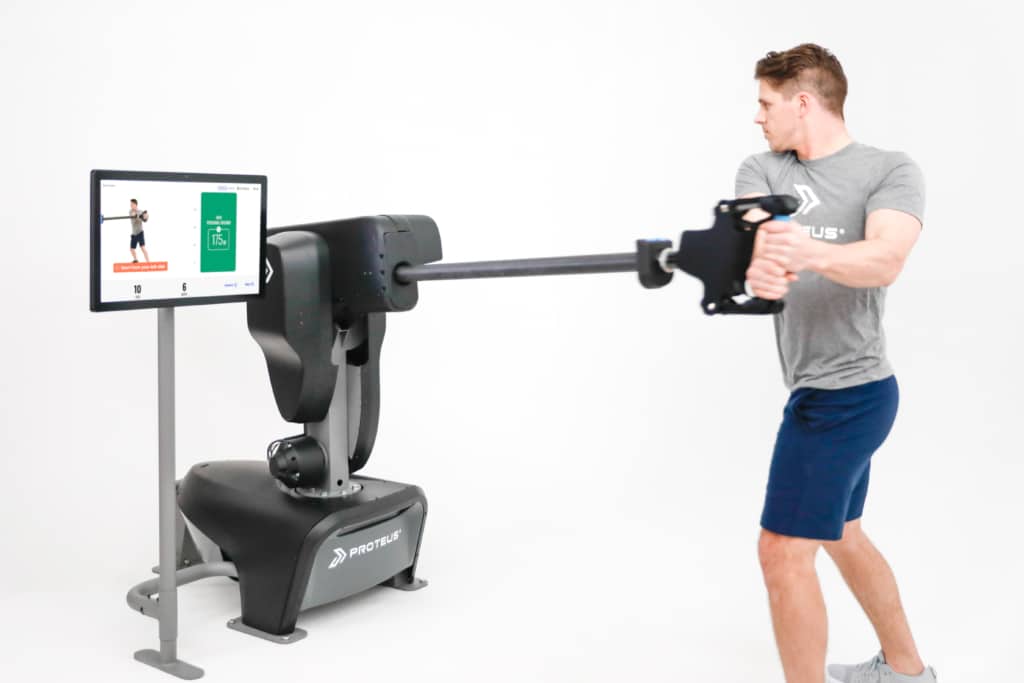
What if we analyzed every performance test performed on Proteus to assess insights, patterns, or performance characteristics?
We’re doing just that…
Over the past several months, our team has been building out an engine to analyze the millions of different data points Proteus records during performance testing. Up to now, our priority has been to give trainers access to a very broad spectrum of Proteus’ proprietary performance data. After years of data recording and working with some of the greatest trainers in the field, we’ve started to make sense of it all. We built this analysis engine to automatically synthesize performance data for any movement across the entire body and instantaneously provide digestible and actionable training recommendations and insights personalized to each individual athlete’s needs.
Background
In building this analysis algorithm, we performed an analysis of our historical database—focusing specifically on power and acceleration (two of Proteus’ 20 proprietary metrics)—which yielded valuable new findings and normative data. We now have the unique ability to zoom out and get a bird’s eye view of training and performance characteristics across athletes of all ages, sport, skill level, and position. With this analysis, we have been able to develop new normative data across multiple sports and provide benchmarks and baselines for coaches and trainers.To showcase our capabilities, we are providing our first analysis below. In this case study, we analyzed 616 Proteus performance tests comprised of 52,360 reps and more than 1 million data points. We narrowed our focus towards Males 20-30 years old who completed the Cressey Performance Test across all our sites from September 1, 2021, to Aug 31, 2022.
The 3 Hypotheses
The 3 main hypotheses we tested are outlined below. While some of these hypotheses are commonly held beliefs in the sports performance space, none of them have had objective data to back the general opinion until now.
These hypotheses include:
- Athletes have significant imbalances between strength and speed.
- Performance with sagittal plane movements does not translate to performance with transverse and frontal plane movements.
- Core rotational movements lag behind the upper and lower body in strength development
We will be continuing to apply this same methodology analysis to other populations in the near future. In the meantime, we hope you enjoy our findings. This is just the beginning!
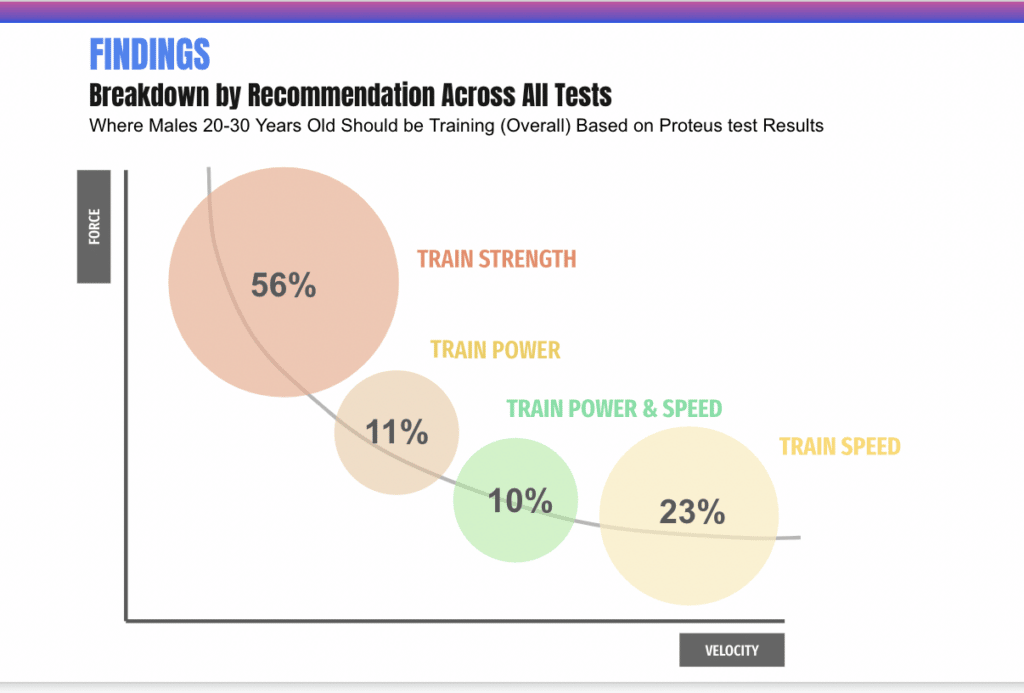
DOWNLOAD OUR INDIVIDUAL FINDINGS PER HYPOTHESIS BELOW ⬇️
Hypothesis #1: Athletes have significant imbalances between strength and speed.
Hypothesis #2: Performance with sagittal plane movements does not translate to performance with transverse and frontal plane movements.
Hypothesis #3: Core rotational movements lag behind the upper and lower body in strength development.

